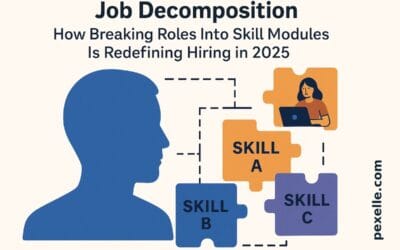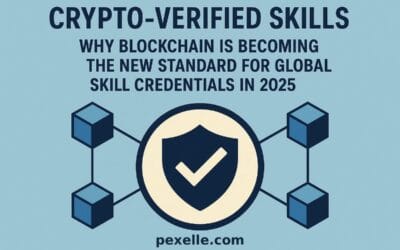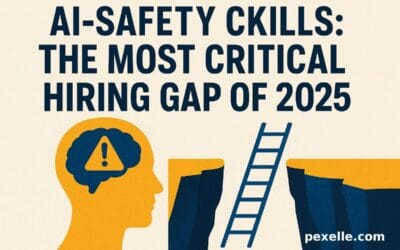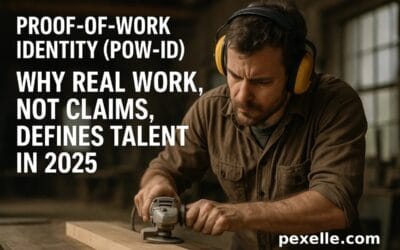Resume-Less Hiring: The Shift Toward Evidence-Based Talent Selection (2025)

For decades, resumes have been the primary currency of the hiring process. They summarized education, work history, and achievements in a compressed and highly subjective format. But in 2025, leading organizations such as Google, Tesla, IBM, Shopify, and Unilever have moved toward a radically different hiring model:
Hiring by Test → Skill Profile → Scoring → Offer
This shift marks the rise of Resume-Less Hiring, where candidates are evaluated on what they can actually do rather than what they claim they have done.
1. Why Resumes Are Losing Their Power
Resumes have three fundamental weaknesses:
- They are self-reported and often exaggerated.
- They lack context — two identical job titles may represent completely different responsibilities.
- They do not prove capability — only experience exposure.
In a world where work is faster, remote, global, and skills evolve continuously, organizations can no longer rely on static summaries. They require validated, real indicators of performance.
2. The New Hiring Flow: Test → Skill Profile → Score → Placement
This model prioritizes performance before employment, not after.
| Step | What Happens | Why It Matters |
|---|---|---|
| 1. Task or Skill Test | Candidate performs a real job-relevant task | Measures execution, not theory |
| 2. Skill Profile Generation | Skills are broken down into measurable micro-components | Creates clarity about actual abilities |
| 3. Scoring & Benchmarking | Performance is compared against defined standards | Makes hiring fair and objective |
| 4. Job Placement | Candidate is matched to roles aligned with their strengths | Reduces mis-hiring and turnover |
This system directly aligns competency → role fit → productivity.
3. Why Major Companies Are Leading This Shift
Large organizations face:
- High volume of applicants
- Increasing variability in training quality
- Skill gaps between education and job performance
Resume-less hiring solves these problems by:
- Reducing bias
- Removing dependency on school prestige
- Identifying hidden or non-traditional talent
- Accelerating hiring cycles
It enables meritocratic hiring at scale, not credential-based filtering.
4. The Rise of Skill Scores and Competency Maps
Instead of reading bullet points, employers now look at:
- Task completion quality
- Problem-solving approach
- Output reliability
- Consistency across multiple tasks
The result is a Skill Score:
A quantified, validated measure of ability under real conditions.
This score is dynamic, not static.
It evolves as candidates learn, build, and deliver more.
5. Where Pexelle Fits In
Most platforms still treat skills as either:
- Lists (e.g., LinkedIn), or
- Courses completed (e.g., Coursera, Udemy)
Neither reflects real-world capability.
Pexelle enables:
| Capability | Impact |
|---|---|
| Task-based skill testing | Measures real performance |
| Micro-skill mapping | Breaks down ability into actionable components |
| Verifiable proof-of-skill | Replaces self-reported claims |
| Skill scoring benchmarks | Allows fair comparison across candidates |
This allows companies to hire based on demonstrated competence, not reputation or background.
Pexelle is not just supporting resume-less hiring —
Pexelle is the infrastructure that makes it scalable, fair, and measurable.
6. The Future Is Evidence-Based Talent Mobility
Work is moving from:
- Job Titles → Task Capabilities
- Experience Claims → Performance Proof
- Resumes → Verifiable Skill Profiles
Resume-Less Hiring is not a trend.
It is an operational evolution in labor markets.
It opens opportunities for:
- Self-taught talent
- Career switchers
- Nontraditional learners
- Global distributed teams
Skill becomes portable, verifiable, and owned by the individual, not a company or institution.
Conclusion
The question is no longer:
“What have you done?”
but
“What can you demonstrate now?”
Resume-less hiring is the foundation of a more fair, efficient, and capable workforce.
It rewards ability over background and proof over claims.
Platforms like Pexelle are enabling this transition — not by replacing the hiring process, but by rebuilding the evidence layer that hiring depends on.
The future of hiring is already here.
And it doesn’t come with a resume.
Source : Medium.com




